The Hip Hinge, A Beginners Guide to Preventing Back Injuries

Contents
When it comes to protecting the lower back, there is no movement more important to learn than the hip hinge. The hip hinge is a term used in fitness and rehabilitation circles to describe bending at the hip instead of rounding the lower back. It’s taught in gyms as a precursor to exercises like the Deadlift and Squats. It’s kind of used like movement prep as hinging at the hip is a part of both of these exercises.
Now this is the important bit. The hip hinge doesn’t just belong in the gym. It’s a part of normal human movement. Every time you bend forward, you should bend at the hips and avoid rounding or flattening your lower back.
I really do mean every time too. Every time you go to sit or stand, bend to pick something up, or even spit your tooth paste into the sink. With all of these movement and thousands more, the motion should always start at the hips. In fact, the only time you should let your lower back round is when you are sat on the toilet (more on this soon!). Even then, you should hinge at the hips to stand up after you are done.
I have lost count of the times I have seen someone flatten their lower back after a gym session. The person executes sets of perfect Deadlifts, cools down, stretches and then goes to pick their gym bag up and instantly rounds their spine. They then usually realise I have seen them do it and this ‘Oh Shit!’ expression appears on their face.
Why is the hip hinge so important?
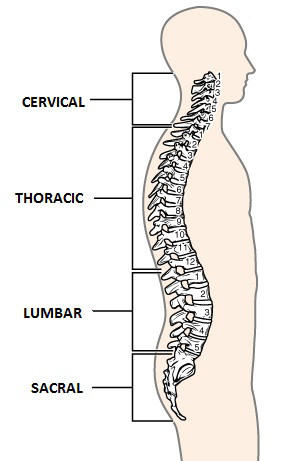 Study after study has shown that repeatedly rounding or flattening the lumbar spine (lower back) trashes it. A bit of anatomy first. Our spines have natural curves and the bones in our spines (vertebra) have disks made out fibrocartilage in between them. Each disk helps to prevent wear and tear on the bones. They also provide shock absorption and help distribute the weight evenly to the vertebra below.
Study after study has shown that repeatedly rounding or flattening the lumbar spine (lower back) trashes it. A bit of anatomy first. Our spines have natural curves and the bones in our spines (vertebra) have disks made out fibrocartilage in between them. Each disk helps to prevent wear and tear on the bones. They also provide shock absorption and help distribute the weight evenly to the vertebra below.
The disks themselves are a bit like flat jelly donuts. In the centre of each disk there is a liquid nucleus. This liquid centre helps to provide some of the shock absorption. The nucleus can be thought of as a bubble. When you round your back, the edge of the disk is squeezed. This pressure causes the bubble to move away towards the back of disk. Over time, this can cause the back wall of the disk to weaken and bulge (herniate). This bulge can end up pressing on the spinal cord leading to conditions such as sciatica.
All of our joints have ligaments that connect our bones to each other and help to stabilize the joint. Each ligament contains sensors (proprioceptors) which monitor length and tension. When a ligament becomes over stretched, a signal is sent to nearby muscles as part of a protection mechanism. “Hey muscles! We are getting ripped apart here, lend a hand will you”. The muscles around the area then contract (shorten) to prevent further movement.
The trouble is, most of us spend quite long periods of time sitting with flexed rounded backs. Over time, these ligaments become elongated and the mechanism described above becomes less effective. This leaves us in a state where we are effectively hanging off our ligaments every time we lean forward and round our backs.
Hinging at the hips, helps us maintain a neutral spine (normal curvature) during movement. It keeps the pressure evenly distributed on each disk (preventing herniation) and ensures we use our muscles to resist gravity and protect our joints.
As I already mentioned, hinging is a part of normal movement. It’s something that should happen naturally whenever we bend over. We shouldn’t have to think about it. We should be able to feel when we about to round or flatten our lower backs and prevent it happening. Restoring this natural pattern and learning to feel what is going on can take a bit of practice. Stick with it and try to use the technique as often as you can in everyday life. Eventually it just becomes automatic.
Learning to hip hinge
Before practicing hip hinging there are two vital things you need to know how to do. You need to learn how to diaphragmatically breathe and you need to know how to brace your abs. If you don’t know how to do these two basic things you will just mess the hip hinge up and compensate by using the wrong muscles. You read more about these subjects by clicking on the links below.
Once you are sure you can breathe and brace, you can move on to the hinge.
Performing the hip hinge
I’m going to break down how to hinge when using a bar in the gym. The same principles apply when bending over during everyday life. True, you don’t need to brace your abs anywhere near as much when dealing with light weights. I just think it helps to learn how to hinge under all eventualities.
I should also mention, that the version of the hinge I am describing here differs slightly from the one most frequently taught in gyms. I teach the hinge with a straight knee as opposed to a bent knee. It’s basically a more simplified version. The straight leg hinge is almost like a straight leg deadlift, only nowhere near as deep (and without as much weight).
The traditional hip hinge can often be too complicated for beginners to learn. I teach the straight legged version because I find that people pick it up quicker. Once a client can perform a straight leg hinge, I progress them to bent knee when they start deadlifting and squatting.
I don’t advocate straight leg hinges using very heavy weights. It’s just about learning to bend at the hip instead of the back. I also recommend pre-cueing the glutes (bum muscles) slightly as it helps to protect the knee.
I have never had anybody hurt their knees doing this version of the hinge and I have been teaching it for over 10 years. Having said that, we all differ slightly so if know you have knee issues you may want to keep your knees slightly bent during the movement.
The set up
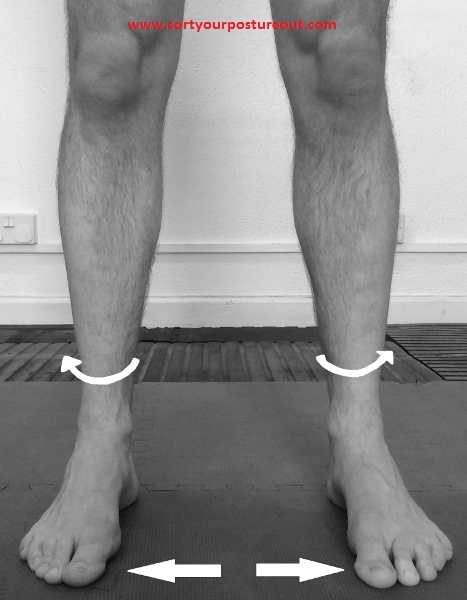 Grab a barbell or even a broom handle and find yourself a bit of space. It can also be helpful to stand side on to a mirror so that you can keep an eye on your lumbar spine if needed.
Grab a barbell or even a broom handle and find yourself a bit of space. It can also be helpful to stand side on to a mirror so that you can keep an eye on your lumbar spine if needed.
Stand with your feet at around hip width (or just outside it) with your toes pointing straight ahead*. Imagine trying to gently stretch the floor between your big toes by gently tightening your buttocks. You should feel your knee turn outwards and the arch of your foot increase. You have now set your pelvis, legs and feet into a good stable position.
Take a diaphragmatic breath and hold it. Brace your abs then breathe out whilst keeping your belly tight. Doing this helps to protect your spine.
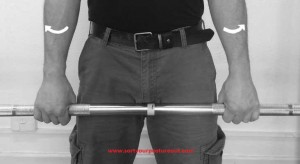 Grip the bar with your hands just outside hip width. Next imagine trying to break the bar in the middle (this only needs to be done gently). To do this, twist your arms outwards and apply pressure to the bar with your little finger and thumb. You should feel your shoulders move back and down slightly. You have now tightened your upper back and set your shoulder in to a good position.
Grip the bar with your hands just outside hip width. Next imagine trying to break the bar in the middle (this only needs to be done gently). To do this, twist your arms outwards and apply pressure to the bar with your little finger and thumb. You should feel your shoulders move back and down slightly. You have now tightened your upper back and set your shoulder in to a good position.
Tuck in your chin (imagine trying to give yourself a double chin). You are now ready to hinge.
The hinge
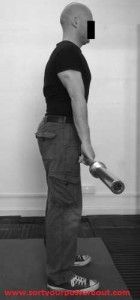 Whilst keeping your knees straight, slowly push your legs backwards and bend at the hips. You should feel your weight shift into your forefoot. Go with it. Keep the bar over the mid part of your feet and continue to hinge.
Whilst keeping your knees straight, slowly push your legs backwards and bend at the hips. You should feel your weight shift into your forefoot. Go with it. Keep the bar over the mid part of your feet and continue to hinge.
At some point you will feel a sensation like a stretch, down the back of your legs. This is your hamstrings telling you that you are approaching the end of your range of motion. Listen to hamstrings and stop before you round your lumbar spine. Reverse the motion and return to an upright posture so that your hips finish under your lungs.
Things to bear in mind:
- Keep gently breaking the bar and pulling the floor apart with your big toes throughout the movement.
- Don’t over arch your back, keep your abs braced.
- Never allow your lumbar spine to round or flatten.
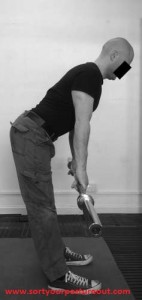
- Your whole spine, from hips to head, should move as if they are one unit.
- Don’t hold the bar out in front of you. The bar should stay over your centre of gravity (the mid foot).
- Don’t hold your breath.
- You should never feel any pain anywhere. If you do, stop and go and get yourself checked out by a therapist.
Notes:
Some people (usually the hypermobile), are unable to feel their hamstrings working during the movement. This can be quite tricky, as a person with this problem won’t be able to feel when they should stop. If you are one of these people, you will need to watch your back in the mirror as you hinge.
Failing that, try to find a friend with a good eye who can warn you before your back starts to flatten. Eventually, with enough practice, you should be able to feel your hamstrings working.
* You may need to adjust your foot position if you have one of the conditions described under the heading congenital in this article.
Strategies if you struggle to hinge
A lot of people find this movement tricky. People often find it difficult to disassociate hip movement from back movement or feel when their lower back is rounding. If this sounds like you, don’t worry. With practice this always improves. You just need to learn how to feel what is going on.
The following techniques can be used to help learn the hinge pattern. Use a mirror if required and practice until you no longer need it. Just stand side-on to the mirror and keep an eye on your movement and lumbar spine.
Disassociating hip and back movement
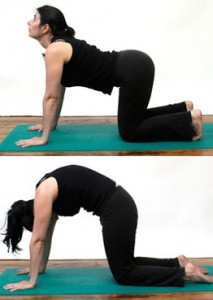 To help learn the difference between hip and back movement I often get clients to perform a few Cat/Cows (see picture). After I have done this once with people, I don’t repeat it. It’s just a one time thing I use to help build awareness.
To help learn the difference between hip and back movement I often get clients to perform a few Cat/Cows (see picture). After I have done this once with people, I don’t repeat it. It’s just a one time thing I use to help build awareness.
Get down on all fours with your hands under your shoulders and your knees under your hips. First arch your back up towards the ceiling then reverse the movement and let your belly sag at the bottom. Repeat the movement 5 times.
Simply performing this yoga movement can help wake the back muscles up a bit and help you to feel the movement occurring in your spine. This is the movement we don’t want during the hip hinge.
Next, try to find the middle of these two movements. This is approximately neutral and the position your spine should be in during the hinge.
For the next few techniques, I find that it helps to use a wall to help encourage the backwards movement of the legs. Simply stand about 8 inches from the wall and each time you hinge, try to touch the wall with your bum.
Pouring out the pelvis
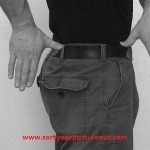 This is usually the first standing technique I use with beginners. Stand with your heels about 8 inches from the wall. Next, feel around the front of your pelvis. You should be able to find two bony points on either side. These are your ASIS (Anterior Superior Iliac Spines). If you feel around your back your should find two other bony points which are your PSIS (Posterior Superior Iliac Spines).
This is usually the first standing technique I use with beginners. Stand with your heels about 8 inches from the wall. Next, feel around the front of your pelvis. You should be able to find two bony points on either side. These are your ASIS (Anterior Superior Iliac Spines). If you feel around your back your should find two other bony points which are your PSIS (Posterior Superior Iliac Spines).
Place the thumb of your left hand on your right ASIS and the thumb of your right hand on your PSIS. For some people, the PSIS can be difficult to locate. If you have trouble finding them, just make sure your thumb is touching the back of your pelvis at a similar height to your ASIS.
Repeat the steps outlined above in ‘The set up’ (see above) to prepare your body for the movement.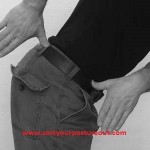
- Feet straight ahead.
- Gently stretch the floor apart between your big toes by tightening your bum.
- Take a diaphragmatic breath, hold it, brace, then breath out & stay braced.
Imagine your pelvis is a bowl of water. As you push your legs back towards the wall, imagine pouring the water out of the front of the bowl. As you move you should feel your ASIS (marked by your index finger) moving down and your PSIS (marked by your thumbs) moving up. Stop bending just before these bony points stop moving. Again, use the mirror to make sure your back doesn’t change during the movement.
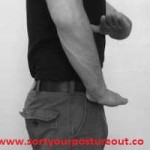 The two hand rule
The two hand rule
Thanks to Kelly Starrett (DPT) co-founder of mobilitywod for this one. This is very similar to the previous technique, just with a different hand position.
Place the side of your left thumb against your left ASIS so that your palm is parallel with the ground. With your right hand find the bottom of your ribcage and position the hand in the same way.
Repeat the ‘set up’ steps you used in the techniques above to set your feet hips and back into a good safe position.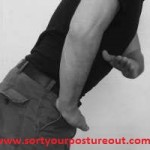
Just like before, slowly bend forward at the hips keeping your abs braced and your knees straight. At no point during the movement should your hands get closer together or further apart. This would indicate that your spine is flattening.
The same rule applies as you come back up again.
The dowel method
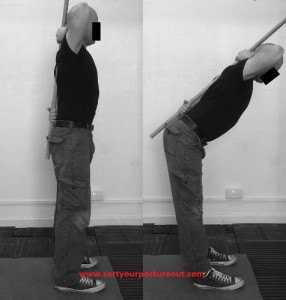 This technique comes courtesy of Grey Cook (MSPT, OCS) founder of the functional movement screen. For this technique you will need a dowel, stick, broom or length PVC pipe that’s at least 4ft long (120cm).
This technique comes courtesy of Grey Cook (MSPT, OCS) founder of the functional movement screen. For this technique you will need a dowel, stick, broom or length PVC pipe that’s at least 4ft long (120cm).
Assume the position shown in the picture with one hand behind your neck and the back of the other hand against your lumbar spine. Make sure the stick is in contact with your bum, upper back and head.
As before, repeat the ‘set up’ steps listed above then start to hinge.
You need to keep the stick touching your head, upper back and bum without squishing your hand between the stick and your lumbar spine.
Don’t become unhinged
Sorry couldn’t resist the pun. As I mentioned at the beginning, the hinge doesn’t belong in the gym. This is a natural movement and should be completely subconscious. You need to reteach your body how to move efficiently. Your body knows how to this as you moved this way as a child. It just needs reminding.
To relearn the hinge pattern, you need to practice. Try to hinge every time you bend forward. It doesn’t have to be a full hinge every time. If you are spitting your tooth paste out you don’t need to head-butt the sink. You just hinge enough to get your bum behind then spit without covering your chest in toothpaste.
If you are lifting a child out of a car seat or a baby out of a cot you will probably have to hinge further. Hinge as far as you need to then bend your knees. Above all try to keep your abs braced and don’t flatten your back.
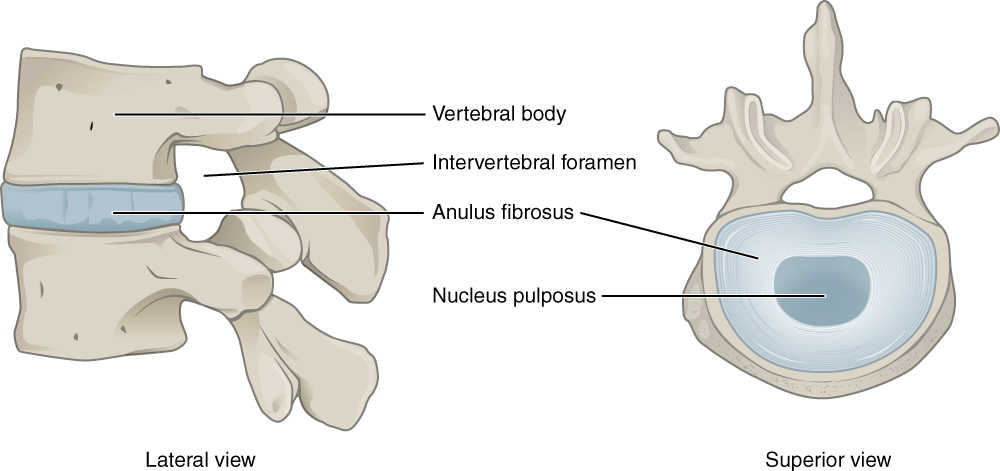
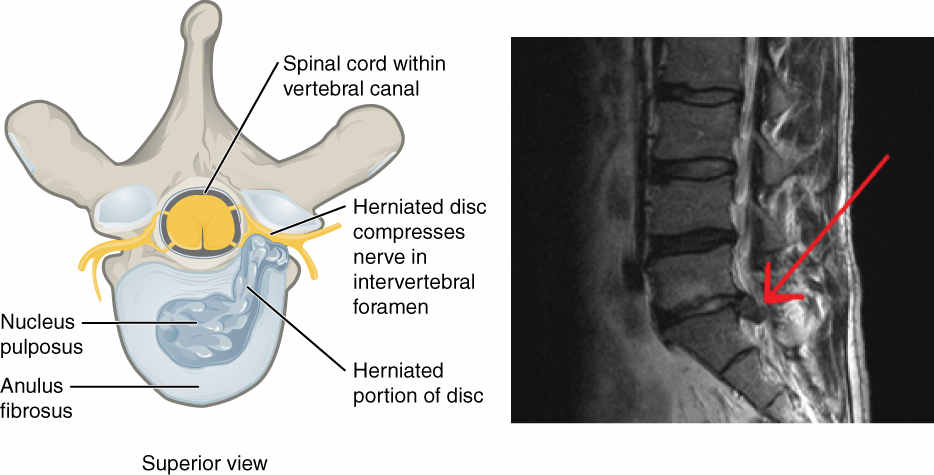
From Certified Advanced Personal Trainer
Each section is well described and dissected and is useful.
Suggestion 1 – I would like to see more good/bad pictures side by side for clients to make immediate comparisons.
Suggestion 2 – The author needs to edit each page for the misuse of “effect.” In most cases herein the verb “affect” is the correct choice.
I have forwarded the articles to some clients.
Thank you.
Great article
This whole site is concise, clear, accurate.
Who are you?
do you have a opt-in to receive emails? I’d like to sign up
Not at the moment but I will add your email address when I get around to setting one up if you like? 🙂
Hi
I am finishing a 4 year program in the Feldenkrais method, and I often look for information that can help people feel and move better. I enjoyed the breathing and bracing and hip hinging info, it’s really helpful! THANK YOU!
I am a college teacher and a trainer in sports now. Could I translate this article and spread to my student in China ? I think it’s very useful for them.